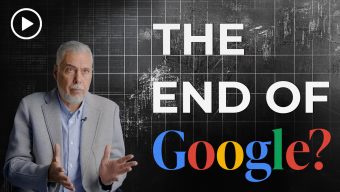Does anyone reading this not use some form of Generative AI daily? I suspect not. According to the Digital Education Council, 86% of students use AI on a daily basis, while McKinsey data indicates that 72% of organizations are using AI and 65% regularly deploy generative AI (nearly double the rate from just ten months earlier). Of course, data tends to lag behind real-time adoption, so these figures are likely even higher today.
This means the question is no longer “Should we use AI?”, but rather “What is the best way to use AI? How can we best leverage it? What human skills are key to keep developing, and which can we delegate to AI?”, and ultimately, “What is the meaning of creating stories if machines can already do it?”
This expansion of AI is happening in a social context marked by a crisis of trust and collective inattention. The Edelman Trust Barometer reveals that 88% of the global population fears losing their job, and 77% distrust their economic stability due to inflation. This fear is compounded by a general sense of dissatisfaction with politics, the media, and the management of information.
AI’s rise will run in parallel with the global increase in social media users, which is expected to reach 5.85 billion by 2027. Society’s social media use has had negative effects on our attention span, with algorithms designed to capture our attention with endless streams of content. Paradoxically, while we turn more and more to the internet and Generative AI to seek solutions to both personal and collective problems, we increasingly face algorithms that shape what we see and think.
In this context, the massive arrival of AI poses a crucial challenge: if we generate all our texts “from scratch” using AI, how will we build trust, motivate, or capture the attention of a society that is evermore distrustful, unhappy, and distracted?
I previously addressed storytelling through three dimensions: the Personal Dimension (what I tell myself), the Interpersonal Dimension (what I share with family and friends), and the Social Dimension (what I communicate to others).
However, in today’s era of artificial intelligence, we must add a fourth: the AI Dimension (how I communicate with algorithms).
Learning how and when to “speak” with machines not only helps us enhance our narratives, but it also forces us to reflect on how to maintain authenticity in a world of increasing AI-induced homogeneity. Using generative AI successfully requires three keys:
- Learning to communicate effectively with algorithms.
- Knowing what we should never delegate to AI.
- Being aware of the tasks in which AI already surpasses us.
How to speak to algorithms
Effective storytelling through AI is based on formulating questions correctly for the technology to understand. The RICCE method provides a clear structure that allows Generative AI tools to understand exactly what the user is looking for:
- R – Role: Clearly define the role you expect AI to take.
- I – Instructions: Specify the instructions precisely.
- C – Context: Provide the necessary background information.
- C – Constraints: Set limitations or conditions.
- E – Examples: Show concrete references of the desired outcome.
For example, here is a detailed prompt for generating a storytelling-based presentation with Generative AI.
Hello, now I want you to act as the world’s best storytelling consultant.
My goal is to create a narrative dream for my presentation.
The purpose of my presentation is to sell PRODUCT to JOB TITLE AND INDUSTRY.
Examples of narrative dreams in presentations are: Tesla doesn’t sell cars but sustainability, Coca-Cola doesn’t sell soft drinks but happiness, and Harley Davidson doesn’t sell motorcycles but freedom. What can we sell beyond what I want to sell?
The tangible results generated by what I sell are XXX. And the emotional results we generate are XXX. My sincere and heartfelt cause is XXX, and my company’s mission is XXX.
Write my narrative dream for my presentation in one sentence, one paragraph, and a longer text.
Understanding what should remain “human”
Despite its efficiency, AI has clear limits. Some aspects must remain under our control to ensure authenticity and differentiation:
- Strategic Vision and Purpose Storytelling is a process of self-discovery. If we rely on algorithms to generate our ideas from the outset, we risk losing authenticity and creativity. Algorithms are tools meant to serve our objectives—not the other way around.
- Reading Between the Lines and Improvisation AI lacks the intuition and ability to interpret human subtleties. While it needs thousands of data points to recognize a dog, a child learns this concept almost instantly. We must leverage our natural ability to adapt and interpret meaning, ensuring our narratives respond to the current moment.
- Focus and Critical Thinking Although AI can process vast amounts of data, it cannot make nuanced, value-based decisions. Seeing a single video of thieves in Paris, for example, doesn’t prove the city is overrun by criminals. Critical thinking allows us to see beyond isolated incidents.
- Expressing Your Narrative DNA Never delegate the creation of your essence to AI. This essence begins with the “seed” of your story—a concise statement outlining characters, beginning, ending, and core conflict. In The Godfather, for example: “It’s the story of a young man who, in avenging his father’s assassination attempt, becomes the Godfather.” In both business and academia, every presentation needs a clear seed from which complexity can grow.
- Training AI to Reflect Your Style Once you’ve defined your narrative DNA (or “seed”), train AI on your unique tone and style. You can then request more complex structures or even outline an entire presentation. The key is to start with your own creative core before letting AI assist in building out the details.
- Exploring Transmedia, Visuals, and Data Leverage various formats—videos, social media, infographics—to enrich your narratives, and don’t hesitate to use AI tools for support. However, deciding which format suits each context best should remain a human decision.
- Using Personal Experiences Telling your own story has the power to influence perspectives and emotions. Sharing personal anecdotes not only fosters trust, empathy, and connection but also conveys unique insights—experiences that most AI will never fully replicate.
Knowing where AI beats us
On the other hand, some tasks show AI’s efficiency far surpassing human capabilities:
- Analysis of large volumes of data AI is not just about speed, it offers new ways to interpret information. Algorithms connect data points in ways humans might not see, shaping narratives and decision-making. For example, a company preparing its annual strategy needs to analyze thousands of market reports. AI can quickly detect trends, compare historical data, and even assess emotional shifts in consumer sentiment across social media, enabling business leaders to make faster, more informed decisions.
- Editing and proofreading Editing has shifted from being purely human-driven to a process where AI acts as a co-pilot. Training AI to understand a unique style is essential for maintaining authenticity while optimizing efficiency. An author finalizing a novel can use AI trained on their previous work to detect inconsistencies, improve flow, and refine tone while keeping their personal writing style intact.
- Automatic translation The transformer approach to deep learning – the foundation of the AI revolution – was created to improve Google Translations, and translating remains the task that AI does best.
- Content expansion AI doesn’t just accelerate content creation; it provides the structure and adaptability needed to scale a narrative while preserving its narrative DNA and human essence. A company like Apple has a strong narrative DNA—innovation, simplicity, and design. AI can help expand this core narrative into ad copy tailored for specific regions or repurpose long-form articles into bite-sized social media posts.
“Why learn to tell stories if artificial intelligence already does it for us?”
This question once posed to me did not just challenge the purpose of my classes, it challenged my entire life, which has been built around the passion for storytelling.
When a student asked it, I paused for a moment and answered with another question: “Who are you?”
He was surprised into silence. But at that moment, he understood the answer: Each of us is a story. How we tell ourselves who we are, where we come from, how our most important events shaped us, creates our identity.
This understanding is only the beginning: who we are as a family, as a community, a nation, a state, or a civilization are also stories. Without learning the dynamics of storytelling, without understanding that we are exposed to being manipulated by any leader or algorithm, we are nothing more than secondary characters in other stories.
Therefore learning where AI helps and where it does not is not only the key to clear communication but of something more important: being in control of your own narrative.
Through writing, we develop our own ideas, we uncover things and concepts we would otherwise never have known. We read, we speak, we listen. The process itself is self-reinforcing. It has purpose. Creating our own narratives and shaping the reality around us gives us meaning. We human beings are made to grow, evolve, and strengthen ourselves by delving deeper into our own consciousness. And that is precisely what narratives and their creation provide: the guiding thread through which we weave the meaning of our lives.
If we fully delegate storytelling (or any creative endeavor) to algorithms—without understanding where they excel and where they fall short—we risk far more than failing to stand out; we compromise our very freedom. We also forfeit the chance to learn and grow through the creative process, a pursuit that not only enriches our thinking but gives depth and meaning to our lives.
© IE Insights.











